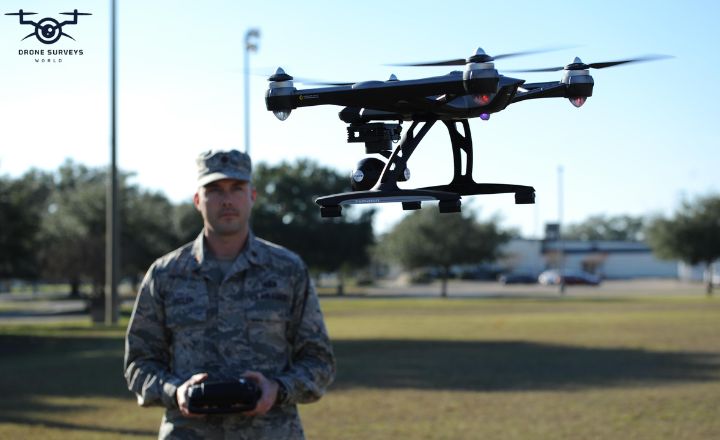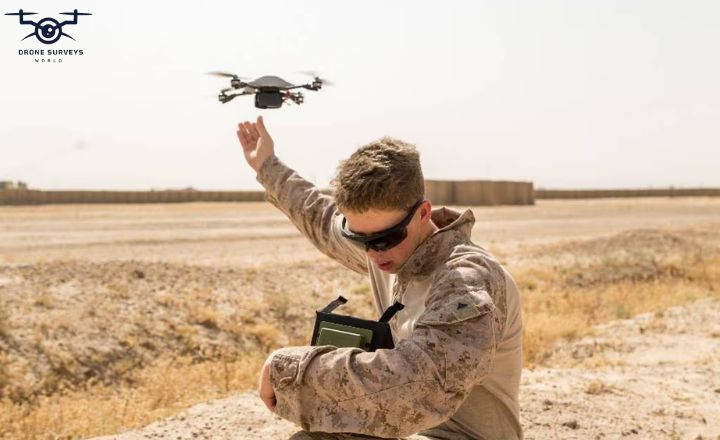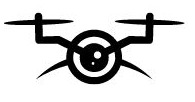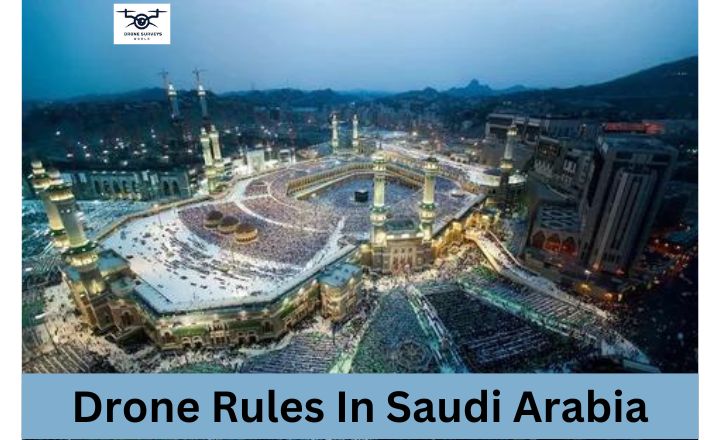Military drones are changing modern warfare. They are unmanned flying vehicles that offer precision, versatility, and stealth. How do military drones work? Military drone uses, for surveillance, reconnaissance, targeted strikes, and aid delivery. Armed forces worldwide rely on them. Let’s explore the capabilities and controversies of these high-tech machines that have transformed combat.
Military Drones
These drones have changed modern warfare by giving defense forces new abilities and strategies. These unmanned aerial vehicles (UAVs) provide benefits like better surveillance, reconnaissance, and precise strikes without risking personnel lives.
As technology improves, these drones are getting more advanced, with increased autonomy and the ability to work in complex environments. They can perform intricate and secret surveillance missions, gathering intelligence on enemy targets in ways that traditional manned aircraft or ground forces can’t.
By operating from a distance, these can quietly watch and follow movements, spot potential threats, and give real-time information to commanders.
Difference Between Commercial And Military Drone
There are some differences mentioned between these two drones;
Applications
These Drones offer many applications such as;
Remote Operation
This technology helps the military collect necessary information, do surveillance missions, and make precise strikes with few people on the ground.
They are used for remote operations to monitor enemy movements, protect borders, and quickly respond to security threats.
Search And Rescue Missions
Drones are now used more for search and rescue missions in natural disasters or crises. These aircraft can cover large areas fast and give real-time information to help find survivors or deliver supplies.
Using military drones in these situations shows they can do more than fight and can help save lives in emergencies through remote control.

Better Reconnaissance, Surveillance, And Target Acquisition
They have changed how armed forces do ISR missions. Drones have sensors and cameras that give real-time data on enemy movements, buildings, and land. This helps military leaders make quick and intelligent decisions.
These drones are also crucial for finding targets accurately. By pinpointing important targets, drones can reduce unintended harm and make missions more likely to succeed. Drones can secretly gather information, giving them an advantage in watching for dangers and following enemy actions for a long time.
Access To Hazardous Areas
They are used in natural disasters, chemical spills to collect essential data without risking human lives. They give immediate information from dangerous areas, helping with disaster response and recovery.
Reduced Risk For Pilots
They help reduce risk for pilots by using unmanned aerial vehicles (UAVs) instead of manned aircraft. This allows military forces to avoid endangering human lives in dangerous situations. These drones provide enhanced safety, enabling strategic decision-making and precise mission execution without risking pilots in combat.
Reducing Collateral Damage And Civilian Casualties
They are used for precise airstrikes to target enemy combatants and avoid harming civilians. This helps make military operations safer and more ethical.
Delivering Critical Aid
They can deliver supplies like food, water, and medical equipment to hard-to-reach areas during disasters when regular transport is not possible or safe.
Supporting Damage Assessments
The drones have special sensors and cameras that show live pictures of specific areas. This helps the military see how much damage airstrikes or ground attacks did. It also helps plan future missions by giving essential information about enemy targets.

Increasing Situational Awareness
They are essential for giving immediate information and watching over an area. They help military forces know what’s happening on the battlefield by quickly covering large areas and collecting valuable data like where the enemy is, what they’re doing, and any dangers.
Border Security
Drones with cameras and sensors can monitor border areas and send live video to authorities. This helps them respond quickly to suspicious activities, making security better.
Obstacle Identification
These drones are changing how obstacles are found in battle. Drones use advanced imaging to identify threats like enemy soldiers or hidden explosives quickly. This information helps soldiers make quick decisions and stop threats before they get worse.
Supporting Infrastructure Evaluation
Drones collect data and images in real-time. They give essential information about the condition of critical structures like bridges, roads, and buildings. This helps military personnel decide where to put resources and how to move through dangerous areas.
Types Of Military Drones
There are four main military drone types ;
Fixed-wing drones
Fixed-wing drones are revolutionizing military operations with their ability to conduct surveillance and aerial mapping missions efficiently. These drones offer a unique advantage with their high flying speed, allowing them to cover large territories quickly.
By providing real-time data and imagery, fixed-wing drones enable military forces to make quick and informed decisions on the battlefield.

Pros & Cons
Fixed-wing hybrid VTOL
This unique combination allows military forces to swiftly respond to emergencies and precisely perform crucial inspections in hard-to-reach areas.
In search and rescue missions, the hybrid VTOL aircraft’s ability to hover and maneuver in confined spaces enables precise aerial reconnaissance, facilitating quick identification of survivors or hazards in disaster-stricken regions.

Pros & Cons
Single-rotor drones
Due to their advanced capabilities and versatility, single-rotor drones have become a critical tool in military operations. With the integration of LiDAR laser scanning technology, these drones can provide detailed mapping and intelligence gathering in real-time, allowing for more precise targeting and reconnaissance missions.
The high endurance capabilities of single-rotor drones enable them to operate for extended periods, making them ideal for long-range surveillance and monitoring tasks in challenging environments.

Pros & Cons
Multi-rotor drones
Multi-rotor drones are also employed for aerial photography and inspection tasks. By capturing detailed imagery from above, these drones enable military personnel to assess potential threats and analyze terrain without putting boots on the ground.
Their smaller size allows them to navigate tight spaces and gather intelligence in hard-to-reach areas, making them an invaluable tool for military strategy.

Pros & Cons
Bottom Lines
Military drones have revolutionized modern warfare with their versatility and capabilities. From reconnaissance and surveillance to combat missions, these unmanned aircraft play a crucial role in enhancing the effectiveness of military operations. With various types available, each serves a specific purpose in meeting the diverse needs of the military. As technology continues to advance, we can expect to see even more innovative applications of drones military in the future.
Frequently Asked Questions
How far can a military drone fly?
They can typically fly up to 20,000 feet in the air and have a range of over 100 miles.
Are there any regulations governing the use of these drones?
Yes, some international laws and regulations govern the use of drones to ensure compliance with ethical standards and prevent misuse against civilians or non-combatants.
Are drones easy to fly for beginners?
Yes, modern drones are equipped with beginner-friendly features like auto-hover and stability controls.





